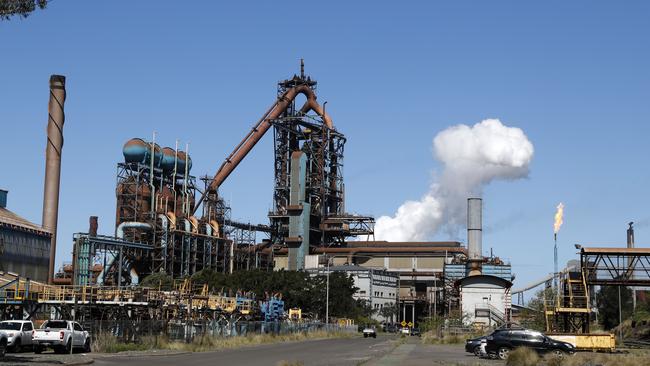BlueScope Steel says low-emission steel production is still years away
High electricity and natural gas costs have cut off potential options for BlueScope Steel to reduce carbon emissions at its Port Kembla steelworks.

High electricity and natural gas costs have cut off potential options for BlueScope Steel to reduce carbon emissions at its Port Kembla steelworks, the company says, as it looks for ways to reduce its carbon footprint.
BlueScope released its latest climate action report on Wednesday, outlining the steps it will take to reduce its carbon emissions.
The company is aiming to cut carbon emissions from its steel making activities by 12 per cent by 2030, compared to 2018 levels.
BlueScope said the steel industry remains a “hard to abate” sector of the global economy, and warned that the pursuit of hard carbon reduction goals in developed nations could just encourage heavy industry to move to countries with lower standards.
But BlueScope also noted that its quickest options for reduction of its Australian carbon emissions had been made more difficult by electricity and gas prices on the east coast.
The steelmaking major is still considering options for the replacement of its No.5 blast furnace at Port Kembla, which will come to the end of its working life later this decade, potentially as early as 2026.
BlueScope has previously said its current best option is the $700m to $800m relining of the No.6 blast furnace, currently sitting idle since it was mothballed in 2011.
Blast furnaces are the source of the bulk of carbon emissions from steelmaking, as they involve mixing iron ore, coke – made from metallurgical coal – and other ingredients such as limestone to produce a molten iron, which is subsequently turned into steel.
While some steelmakers are investigating the use of hydrogen to replace coal in blast furnaces, that technology will not be available at commercial scale before BlueScope has to make a call on the future of its own blast furnace.
But its latest climate report also reveals the company considered other options to replace the output from the blast furnace at Port Kembla before rejecting them because of high energy costs.
Electric arc furnaces (EAFs) melt scrap steel and other high purity sources of iron using electricity, and can be close to carbon-free if powered by renewable energy sources. And direct reduction processes (DRI) use lump iron and a reducing gas – most often natural gas – and are estimated to emit about 25 per cent less carbon than traditional blast furnaces.
BlueScope said on Wednesday it had considered and rejected both options, but was likely to refurbish its blast furnace as the most cost-effective solution, with the inclusion of new technology to reduce carbon emissions to the extent it is possible.
“We have also considered EAF steelmaking however, it is not a plausible option in the required time frame given Australia’s insufficient availability of cost-effective, quality scrap steel to support current production rates at Port Kembla and high electricity costs,” the company said.
“DRI was also considered. However, the relatively high cost of natural gas on the east coast of Australia renders this option economically unviable at this time.”




To join the conversation, please log in. Don't have an account? Register
Join the conversation, you are commenting as Logout